Fire is a devastating and destructive force. When it hits a house with animals inside, it can lead to terrible tragedies. As the animals' owner, it's up to you to make sure their home and environment are as safe as possible.
There are two ways to look at fire safety: Prevention and damage control.
----------------------------------------------------
Prevention
Heat source
The fool proof way to avoid electrical fire is to not install it in the first place. However, this means no light and no emergency heating, which can be a big drawback.
The infrared lamp is the biggest sinner when it comes to coop fires. Not using it, and you're well on your way to fireproofing the coop. However, it's also the easiest heat source, especially when it comes to baby animals that requires spot heating. If you use it, make sure it's cleaned often, and hung correctly. Do not hang it by its cord! Use solid chains, and keep it well away from the birds themselves, so they can't swing it or tear it down.

Here's an excellent BYC article about alternatives to IR lamps in brooders.
There are other models of infrared heating except the regular metal armature with a bulb. Some can be hung high up on the wall and used as whole house heaters. Ceramic bulbs are safer than IR bulbs, and have the advantage of no light to disrupt the chicks' natural day-night circle.
EDIT: An IR bulb that not only popped, but smoldered the screw base. Notice how burnt the dust is, and the metal thread fused to the socket in the 2nd photo. In this case it short circuited, causing a black out and not a fire.


Portable electric heaters with solid casings meant for dirty rooms. They heat the entire room, and the best ones have an emergency shut down if it gets overheated. It uses a lot of electricity, and it must be kept as dust free as possible. And obviously in a place where it can't be knocked over, like up under the roof.

A good old fashioned oil radiator can work as heating too, but the portable ones have been known to rip in the weld seams and explode. Yep, explode, flinging hot oil everywhere... Electric portable radiators are also a dangerous choice in dusty conditions.
There are specialized heating systems for animal housings, but those would be expensive and overkill for a one-room coop. They are, however, meant for this kind of environment and therefore secure to use.
Most adult animals can handle cold fairly well, as long as their house is draft free and dry. Regular sized chickens are comfortable in zero Celsius, waterfowl even lower. If you choose not to use coop heating, make sure their water is ice free. There are several good heated water bowls on the market.

Baby animals must always have access to heat. Instead of the dreaded infrared lamp, consider using a heat pad/plate.

Lights
Use light armatures that are meant for dirty rooms. They should be completely enclosed, as uncovered bulbs or fluorescent tubes are dangerous. Birds can panic, fly up and break them. Best case scenario: glass everywhere. Worst case: fire. The scale in which the safety of armatures is rated is called the IP Code. Simply put, the higher number the better.

Wires, sockets, outlets and any other part of the electrical system must be covered, away from animals and dust free. If you can put it outside the main animal room, do so.
All heat and light sources must be cleaned and checked OFTEN.
Other fire starters
Sunlight shining through glass, self flammable vapors from paint and oils, lighters... Check the coop, pen and surroundings for dangerous materials. If you live by a road, people can throw all kinds of nasty stuff out of their car.
----------------------------------------------------
Damage control
Building materials
Wood is the number 1 material for building, well, anything. It's versatile, relatively cheap and easy to handle. If used right, it creates a sound, stable, draft proof and comfortable house. Unfortunately, it also burns. There really isn't a good way to make sure a wood house doesn't burn.
Drywall is a material used in buildings that require fire proofing. Having a drywall plate as an inside wall greatly reduces the risk of a fire starting inside the house to spread, and vise versa. Drywall must be covered so that the birds can't tear it to pieces.

The alternatives to wood are stone and various concrete materials like cinder block. They're solid, but cold and doesn't have a good thermal insulation value. In places where too warm is a problem, it's an excellent choice. In colder areas, not so much.
Glass and plastic like a greenhouse is hard to regulate temps, hot in the summer and cold in the winter. It could offer a good pen, but is impractical as a coop itself.
The best building materials for the floor are either concrete or earth with deep litter bedding. Both remains relatively tempered when exposed to fire, which will help the animals escape the coop if it's on fire.
Insulation
All insulation disintegrates if it's hot enough. However, some burn/melt faster than others. Wood shaving and spray foam, for example, are terrible choices in terms of fire protection.
Styrofoam is probably the number one insulation of chicken coops. It's easy to handle, and has a good thermal insulation value. Heat doesn't travel through it, but is retained on one side. This is very important in cold weather coops, where the temp difference between inside and outside can be great. It melts at a low temperature and offers fuel to the fire, literally.
Better alternatives are rock wool and glass wool. It has a lower thermal insulation value, meaning you have to use thicker insulation to achieve the same effect as Styrofoam, but it doesn't burn or melt. It's uncomfortable to work with, so be sure to use protective clothes, including face mask.

Whatever you use, insulation should be covered on both sides. Inside so that the animals don't gnaw on it (Styrofoam is a bird favorite), and outside to protect from the weather. Wood is the best alternative on the outside. Inside you can use drywall or wood covered with flooring, like tiles (if you have a heap of money), rubber mats or vinyl. The additional perk of this is waterproofing and easy cleaning.

Bedding
Some bedding burn better than others. The "best" are straw and hay. Shredded leaves and torn newspaper is also an accident waiting to happen if you have a dangerous electrical appliance nearby.

Wood shaving is the most common bedding, and for good reason. It's lightweight, easy and clean. They can have all kinds of shape and form. The biggest and driest burn with flames, saw dust smolders with lots of toxic smoke. Neither result is particularly healthy.
Deep litter bedding is basically compost in different stages, and only the top layer will be burnable. Further down it's earth and also slightly damp. This is definitely a good thing when it comes to fireproofing. Depending on what you use, it will smolder and smoke a little, but nowhere near as bad as shavings on a hard surface.
Sand is the best option for someone who wants a fire proof house. It has other good qualities too, it's easy to maintain and clean, and if offers "free" sand bath for the birds. Be sure to choose the right kind of sand. It must have the right size, not so big it's gravel, not so small it's dusty.
Emergency evacuation
Not many people have a plan on how to evacuate animals effectively if disaster strikes. Questions to ask yourself is:
Is the door you use easy to open?
Are the surroundings around the house safe if you have to let the birds loose?
Can the birds evacuate themselves far enough from the flames?
Do you have a plan on how to house the birds if the house burns down?
In coops, having a good sized, easily accessible opening to the outside pen can potentially save your birds, if it's open all the time. If the outside pen is also large enough for the birds to move away from burnable materials, the birds can escape and survive a coop fire on their own.

----------------------------------------------
Summary
The best fire proof animal housing in hot weather climate is stone and concrete.
For cold climate, wood insulated with rock wool and drywall on the inside offers fire protection and at the same time a comfortable, insulated coop.
The floor is either concrete with sand as bedding, or deep litter bedding on damp earth.
It has a roomy exit that's open at all times, and leads into a big sized pen.
It has a secure, frequently cleaned heat source, industrial light armatures and enclosed electrical appliances.
There are two ways to look at fire safety: Prevention and damage control.
----------------------------------------------------
Prevention
Heat source
The fool proof way to avoid electrical fire is to not install it in the first place. However, this means no light and no emergency heating, which can be a big drawback.
The infrared lamp is the biggest sinner when it comes to coop fires. Not using it, and you're well on your way to fireproofing the coop. However, it's also the easiest heat source, especially when it comes to baby animals that requires spot heating. If you use it, make sure it's cleaned often, and hung correctly. Do not hang it by its cord! Use solid chains, and keep it well away from the birds themselves, so they can't swing it or tear it down.
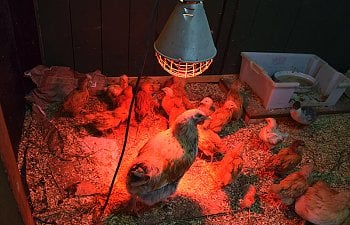
Here's an excellent BYC article about alternatives to IR lamps in brooders.
There are other models of infrared heating except the regular metal armature with a bulb. Some can be hung high up on the wall and used as whole house heaters. Ceramic bulbs are safer than IR bulbs, and have the advantage of no light to disrupt the chicks' natural day-night circle.
EDIT: An IR bulb that not only popped, but smoldered the screw base. Notice how burnt the dust is, and the metal thread fused to the socket in the 2nd photo. In this case it short circuited, causing a black out and not a fire.
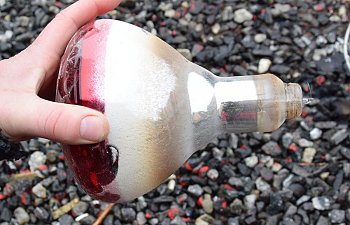
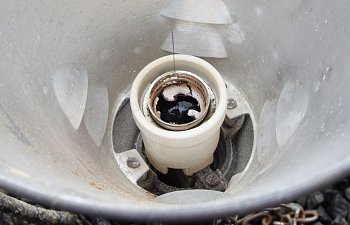
Portable electric heaters with solid casings meant for dirty rooms. They heat the entire room, and the best ones have an emergency shut down if it gets overheated. It uses a lot of electricity, and it must be kept as dust free as possible. And obviously in a place where it can't be knocked over, like up under the roof.
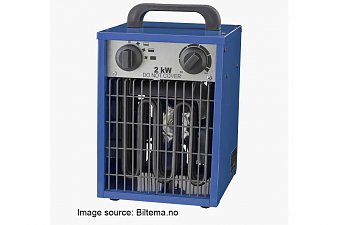
A good old fashioned oil radiator can work as heating too, but the portable ones have been known to rip in the weld seams and explode. Yep, explode, flinging hot oil everywhere... Electric portable radiators are also a dangerous choice in dusty conditions.
There are specialized heating systems for animal housings, but those would be expensive and overkill for a one-room coop. They are, however, meant for this kind of environment and therefore secure to use.
Most adult animals can handle cold fairly well, as long as their house is draft free and dry. Regular sized chickens are comfortable in zero Celsius, waterfowl even lower. If you choose not to use coop heating, make sure their water is ice free. There are several good heated water bowls on the market.
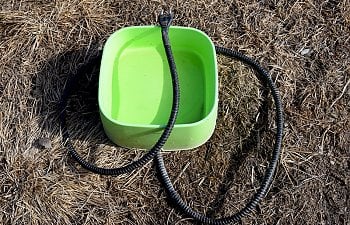
Baby animals must always have access to heat. Instead of the dreaded infrared lamp, consider using a heat pad/plate.
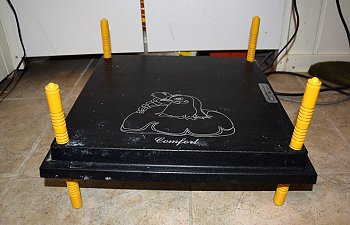
Lights
Use light armatures that are meant for dirty rooms. They should be completely enclosed, as uncovered bulbs or fluorescent tubes are dangerous. Birds can panic, fly up and break them. Best case scenario: glass everywhere. Worst case: fire. The scale in which the safety of armatures is rated is called the IP Code. Simply put, the higher number the better.
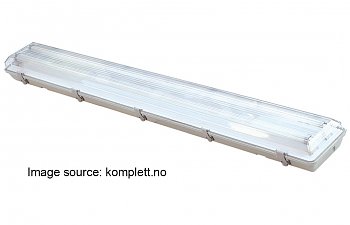
Wires, sockets, outlets and any other part of the electrical system must be covered, away from animals and dust free. If you can put it outside the main animal room, do so.
All heat and light sources must be cleaned and checked OFTEN.
Other fire starters
Sunlight shining through glass, self flammable vapors from paint and oils, lighters... Check the coop, pen and surroundings for dangerous materials. If you live by a road, people can throw all kinds of nasty stuff out of their car.
----------------------------------------------------
Damage control
Building materials
Wood is the number 1 material for building, well, anything. It's versatile, relatively cheap and easy to handle. If used right, it creates a sound, stable, draft proof and comfortable house. Unfortunately, it also burns. There really isn't a good way to make sure a wood house doesn't burn.
Drywall is a material used in buildings that require fire proofing. Having a drywall plate as an inside wall greatly reduces the risk of a fire starting inside the house to spread, and vise versa. Drywall must be covered so that the birds can't tear it to pieces.
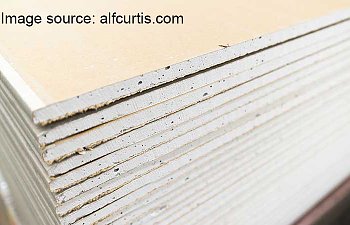
The alternatives to wood are stone and various concrete materials like cinder block. They're solid, but cold and doesn't have a good thermal insulation value. In places where too warm is a problem, it's an excellent choice. In colder areas, not so much.
Glass and plastic like a greenhouse is hard to regulate temps, hot in the summer and cold in the winter. It could offer a good pen, but is impractical as a coop itself.
The best building materials for the floor are either concrete or earth with deep litter bedding. Both remains relatively tempered when exposed to fire, which will help the animals escape the coop if it's on fire.
Insulation
All insulation disintegrates if it's hot enough. However, some burn/melt faster than others. Wood shaving and spray foam, for example, are terrible choices in terms of fire protection.
Styrofoam is probably the number one insulation of chicken coops. It's easy to handle, and has a good thermal insulation value. Heat doesn't travel through it, but is retained on one side. This is very important in cold weather coops, where the temp difference between inside and outside can be great. It melts at a low temperature and offers fuel to the fire, literally.
Better alternatives are rock wool and glass wool. It has a lower thermal insulation value, meaning you have to use thicker insulation to achieve the same effect as Styrofoam, but it doesn't burn or melt. It's uncomfortable to work with, so be sure to use protective clothes, including face mask.
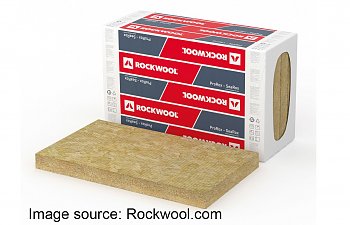
Whatever you use, insulation should be covered on both sides. Inside so that the animals don't gnaw on it (Styrofoam is a bird favorite), and outside to protect from the weather. Wood is the best alternative on the outside. Inside you can use drywall or wood covered with flooring, like tiles (if you have a heap of money), rubber mats or vinyl. The additional perk of this is waterproofing and easy cleaning.
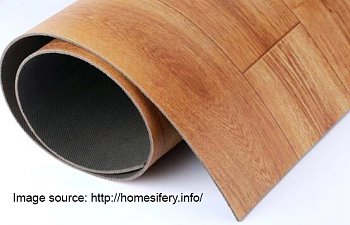
Bedding
Some bedding burn better than others. The "best" are straw and hay. Shredded leaves and torn newspaper is also an accident waiting to happen if you have a dangerous electrical appliance nearby.
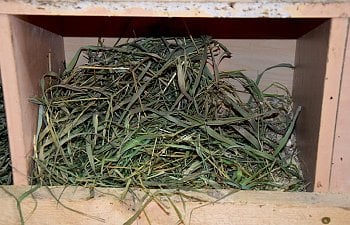
Wood shaving is the most common bedding, and for good reason. It's lightweight, easy and clean. They can have all kinds of shape and form. The biggest and driest burn with flames, saw dust smolders with lots of toxic smoke. Neither result is particularly healthy.
Deep litter bedding is basically compost in different stages, and only the top layer will be burnable. Further down it's earth and also slightly damp. This is definitely a good thing when it comes to fireproofing. Depending on what you use, it will smolder and smoke a little, but nowhere near as bad as shavings on a hard surface.
Sand is the best option for someone who wants a fire proof house. It has other good qualities too, it's easy to maintain and clean, and if offers "free" sand bath for the birds. Be sure to choose the right kind of sand. It must have the right size, not so big it's gravel, not so small it's dusty.
Emergency evacuation
Not many people have a plan on how to evacuate animals effectively if disaster strikes. Questions to ask yourself is:
Is the door you use easy to open?
Are the surroundings around the house safe if you have to let the birds loose?
Can the birds evacuate themselves far enough from the flames?
Do you have a plan on how to house the birds if the house burns down?
In coops, having a good sized, easily accessible opening to the outside pen can potentially save your birds, if it's open all the time. If the outside pen is also large enough for the birds to move away from burnable materials, the birds can escape and survive a coop fire on their own.
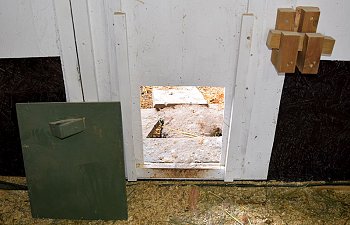
----------------------------------------------
Summary
The best fire proof animal housing in hot weather climate is stone and concrete.
For cold climate, wood insulated with rock wool and drywall on the inside offers fire protection and at the same time a comfortable, insulated coop.
The floor is either concrete with sand as bedding, or deep litter bedding on damp earth.
It has a roomy exit that's open at all times, and leads into a big sized pen.
It has a secure, frequently cleaned heat source, industrial light armatures and enclosed electrical appliances.
